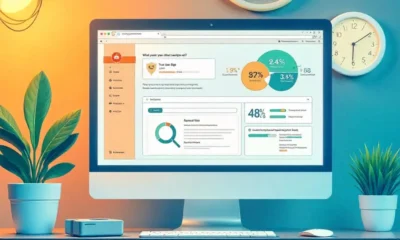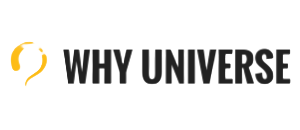EDUCATION
Wengage: Smarter Campus Management

In today’s data-driven academic ecosystem, Wengage is revolutionizing how institutions manage, monitor, and enhance the learning experience. This platform stands at the intersection of technology and education, offering robust tools for student engagement, administrative control, and real-time academic insights. Whether you’re a faculty member, administrator, or student, understanding the potential of Wengage can greatly enhance operational efficiency and educational outcomes.
What Is Wengage and Why Is It Crucial in Modern Education?
Wengage is a comprehensive educational platform that centralizes academic, administrative, and communication functions in one place. Designed primarily for educational institutions, it enables streamlined processes from enrollment to graduation. With its user-friendly dashboard and integrated services, Wengage transforms how stakeholders interact within the academic environment.
The need for platforms like Wengage has surged due to the increasing demand for virtual classrooms, data transparency, and analytics-driven decisions in academia. As institutions strive to become more agile and responsive, Wengage emerges as a reliable companion in that journey.
Core Features That Make Wengage Stand Out
Wengage’s architecture is built around key modules that address specific educational needs. These include:
Student Information System (SIS)
One of the strongest pillars of Wengage, the SIS allows faculty and administration to manage student records efficiently. From grade tracking to attendance and personalized learning plans, everything is under one digital roof.
Learning Management Integration
Wengage integrates seamlessly with existing Learning Management Systems (LMS), facilitating smooth course delivery, assessments, and feedback loops. Educators can post materials, monitor engagement, and provide real-time feedback without switching platforms.
Communication Hub
Efficient communication between students, teachers, and administrators is vital. Wengage offers integrated messaging, announcements, and notification tools to keep everyone aligned.
Analytics and Reporting
Real-time dashboards provide actionable insights into student performance, departmental metrics, and resource allocation. These data tools enable data-backed decisions, improving overall academic and operational efficiency.
Calendar and Scheduling
From exam timetables to institutional events, the inbuilt calendar system ensures that no deadline or activity is missed. It supports automated scheduling that adapts to changes and notifies users instantly.
Benefits of Using Wengage in Educational Institutions
Institutions adopting Wengage report improvements across multiple domains. Here’s how it transforms traditional educational environments:
Centralization and Transparency
Wengage creates a unified platform where all stakeholders can access relevant data. This reduces fragmentation and enhances accountability.
Real-Time Updates
Changes in schedules, course content, or student records are reflected instantly, ensuring that users have access to the latest information.
Improved Engagement
With interactive tools and constant feedback mechanisms, students become more engaged in their learning journeys. Meanwhile, faculty benefit from the simplified delivery of course content and assessments.
Cost and Time Efficiency
Automating tasks such as attendance, grading, and scheduling saves hundreds of man-hours annually. Moreover, the reduction in paper-based systems lowers operational costs.
Regulatory Compliance
Wengage supports educational compliance standards such as FERPA and GDPR, ensuring data protection and institutional accountability.
How Wengage Compares to Other Academic Platforms
To truly understand Wengage’s value, it helps to compare it against other popular educational management platforms. Below is a comparison table:
| Feature | Wengage | Platform A | Platform B | Platform C | Platform D |
|---|---|---|---|---|---|
| Cost Efficiency | High | Medium | Low | Medium | High |
| Ease of Use | Very Easy | Moderate | Moderate | Complex | Easy |
| Real-Time Analytics | Advanced | Basic | Moderate | Advanced | Limited |
| Integration Options | Extensive | Moderate | Limited | Extensive | Moderate |
| User Support | 24/7 Dedicated | Limited Hours | Email Only | Business Hours | 24/7 Chat |
This table clearly shows that Wengage outperforms most competitors in key performance areas critical for modern institutions.
Real-World Applications and Success Stories
Several educational institutions have adopted Wengage to optimize both administrative and learning processes. For instance, a mid-sized university in the Midwest reported a 40% increase in academic efficiency after implementing Wengage. The automation of manual tasks like class registration and transcript generation saved the institution over 1,500 hours annually.
Administrators in high schools noted better engagement and academic tracking using Wengage, especially during the transition to hybrid learning models. These case studies underscore how Wengage goes beyond functionality — it becomes a strategic asset.
Challenges and How Wengage Overcomes Them
Every system has its growing pains, and Wengage is no exception. However, the platform proactively addresses common issues such as:
1. Learning Curve
Though Wengage is user-friendly, institutions might need initial training sessions. However, extensive documentation and support materials help users get up to speed quickly.
2. Integration with Legacy Systems
Institutions with older infrastructure might face compatibility issues. Wengage’s tech team offers tailored integration modules to ensure smooth onboarding.
3. Data Migration
Migrating vast amounts of historical data is a daunting task. Wengage provides tools and professional services to help institutions securely transfer their data without loss.
The Future of EdTech and Wengage’s Role in It
EdTech is moving toward personalized learning, immersive technologies, and AI-driven assessments. Wengage is well-positioned to integrate with these advancements due to its modular architecture. Future updates promise features like predictive analytics, adaptive learning paths, and AI-powered administrative assistance.
As educational institutions evolve, Wengage is ready to scale, adapt, and support a future where digital and physical classrooms merge seamlessly.
Final Thoughts
Wengage represents a new era in educational management — one marked by efficiency, connectivity, and real-time intelligence. It is not just a platform but a transformative tool that aligns with the modern demands of education.
Institutions looking to stay competitive, student-focused, and data-driven should seriously consider Wengage as their digital infrastructure partner. With its versatile features, strong support system, and future-ready design, Wengage is setting new benchmarks in the EdTech domain.
FAQ’s
What is Wengage used for?
Wengage is used to manage student data, streamline academic workflows, and facilitate communication in educational institutions.
Is Wengage suitable for small institutions?
Yes, Wengage is scalable and works efficiently for institutions of all sizes.
Can Wengage integrate with other platforms?
Absolutely. Wengage supports integration with most major Learning Management Systems and legacy academic software.
Is data on Wengage secure?
Yes, Wengage adheres to international data security standards including GDPR and FERPA.
How long does it take to implement Wengage?
Depending on the size of the institution, full implementation can take a few weeks to a few months.
Does Wengage provide training?
Yes, comprehensive training materials, webinars, and live support are available for all users.
EDUCATION
N-Gon Definition: What It Is and Why It Matters in Math and 3D Design

Understanding what an n-gon is can make a big difference—whether you’re solving geometry problems or refining a 3D model. In this guide, we break down the n-gon definition, its mathematical significance, and its role in fields like computer graphics and architectural modeling.
Let’s dive in.
What Is an N-Gon?
An n-gon is a geometric shape—specifically, a polygon—with n number of sides. The “n” is a variable that stands for any integer greater than or equal to 3.
- A triangle is a 3-gon.
- A square is a 4-gon.
- A pentagon is a 5-gon.
- …and so on.
So, an n-gon is simply a general term for any polygon with “n” sides.
In mathematics, the term helps describe polygons in a scalable way—without naming each shape individually.
Key Characteristics of an N-Gon
Whether regular (all sides and angles equal) or irregular (uneven sides/angles), all n-gons share some basic properties.
Properties of an N-Gon
- Number of sides: Exactly n sides.
- Number of angles: n internal angles.
- Sum of interior angles: (n−2)×180∘(n – 2) \times 180^\circ
- Can be regular or irregular: Based on side and angle uniformity.
- Convex vs. concave: Determined by internal angle measures.
Mathematical Use of N-Gons
In pure mathematics and geometry education, n-gons serve as tools to teach:
- Angle calculation
- Symmetry principles
- Polygon classification
They’re also foundational in proofs and theorems, such as tessellations and tiling problems.
N-Gons in 3D Modeling and Game Development
In 3D modeling software like Blender, Maya, or 3ds Max, the term “n-gon” has a different context. It refers to any polygon with more than four sides—used in modeling complex surfaces.
Why N-Gons Matter in 3D Graphics
- Easier modeling: Useful during the sculpting phase.
- Potential rendering issues: N-gons may deform poorly when animated.
- Topology concerns: Many engines prefer tris (3-gons) or quads (4-gons) for cleaner results.
Game engines like Unity or Unreal often require meshes to be converted to tris for real-time rendering.
Real-World Applications of N-Gons
Architecture and CAD
Designers use n-gons in structural diagrams and floor plans to represent irregular walls and surfaces.
Data Visualization
N-gons are used in radial charts or custom graph plotting in advanced data interfaces.
Education and Research
Geometry classes often use n-gons to teach concepts of measurement, symmetry, and polygon classification.
Pros and Cons of Using N-Gons
| Pros | Cons |
|---|---|
| Flexible in modeling complex shapes | Can create issues in animation |
| Reduce mesh density for organic forms | Not ideal for real-time rendering |
| Used in mathematical generalization | Harder to control in topology cleanup |
How to Work with N-Gons in Modeling
If you’re a 3D artist, here’s how to handle n-gons safely:
- Use during modeling, but convert to quads/tris before export.
- Clean up topology to avoid artifacts.
- Test animation deformations in rigged models.
Expert Opinions on N-Gons
Dr. Hannah Fry, mathematician and author, says:
“N-gons represent a beautiful simplicity in geometry—providing a formulaic way to understand complexity.”
Jonathan Williamson, Blender Foundation instructor:
“N-gons are great during early modeling stages, but clean quad-based topology is critical for professional-grade output.”
Dr. Michael Bailey, UC Davis Computer Graphics Professor:
“In real-time graphics, n-gons pose risks. Clean meshes with tris or quads are much more GPU-friendly.”
Common Mistakes to Avoid
- Relying on n-gons in game assets
- Ignoring non-planar faces in modeling
- Forgetting to triangulate meshes before export
Final Thoughts
The n-gon might sound like a complex term, but it’s simply a flexible way of referring to any polygon with “n” sides. Whether you’re a math student, digital artist, or engineer, understanding n-gons can streamline your work and reduce errors.
Master the n-gon, and you master a foundation of geometry and modeling.
FAQ’s
What is the difference between a polygon and an n-gon?
A polygon is the general term; an n-gon is a more technical way of saying “a polygon with n sides.”
Are n-gons bad in 3D modeling?
Not inherently, but they can cause problems in animation or real-time rendering if not triangulated properly.
How do you find the sum of interior angles of an n-gon?
Use the formula: (n−2)×180∘(n – 2) \times 180^\circ
Can an n-gon be regular?
Yes, if all its sides and angles are equal, it’s called a regular n-gon.
What’s the smallest possible n-gon?
The triangle (3-gon) is the smallest polygon that forms a closed shape.
EDUCATION
Anna’s Archive: The People’s Open Library in a Digital Age

Anna’s Archive is a free, open-source shadow library that aggregates and mirrors books, academic papers, and digital content from multiple sources—especially those that are often locked behind paywalls. Emerging from the ethos of information freedom and preservation, it became particularly prominent after the legal takedown of Z-Library in late 2022.
It’s not just a pirate website—it’s an ambitious archiving project that aims to preserve humanity’s knowledge for future generations. For students, researchers, and digital seekers frustrated by inaccessible paywalled journals or expensive textbooks, Anna’s Archive serves as a gateway to content that might otherwise be lost or hidden.
Who Uses Anna’s Archive and Why?
Target users of Anna’s Archive include:
- Students and researchers in developing nations or underfunded institutions
- Independent scholars without institutional access to major databases
- Digital librarians and archivists looking to preserve cultural or scientific heritage
- Tech-savvy individuals who value online anonymity and open access
Whether you’re finishing your dissertation or chasing an obscure research topic, Anna’s Archive offers a treasure trove of scholarly, historical, and technical resources.
Key Features of Anna’s Archive
Comprehensive Content Indexing
Anna’s Archive aggregates and mirrors from:
- LibGen (Library Genesis)
- Sci-Hub (for academic journals)
- Z-Library (mirrored collections)
- Internet Archive (metadata and mirror support)
With over 25 million books and growing, it has become one of the most extensive open databases in the world.
Powerful Search Capabilities
Users can:
- Search by title, author, ISBN, or topic
- Access multiple mirror links
- View metadata (formats, file size, tags)
- Choose from PDF, ePub, MOBI, and other formats
Privacy-Centric Design
Anna’s Archive is designed to protect user identity, offering:
- No login requirement
- HTTPS encryption
- .onion access via Tor for anonymous browsing
- An actively updated mirror list in case domains are blocked
“Anonymity is a feature, not a flaw. Information wants to be free, and people deserve access to knowledge regardless of borders or bureaucracy.”
— Anna’s Archive Manifesto
Legal and Ethical Considerations
Anna’s Archive exists in a legal gray zone. While the project claims to preserve and democratize information, many publishers argue it facilitates copyright infringement.
According to Dr. Alexandra Elbakyan, founder of Sci-Hub:
“If knowledge is a human right, then the tools to access that knowledge must be accessible too.”
— Interview with Wired Magazine, 2023
Important: Users must understand the legal implications in their region. Some countries treat access to shadow libraries as illegal, while others are more lenient. Use tools like VPNs and Tor Browser cautiously and ethically.
How to Safely Use Anna’s Archive
If you decide to explore Anna’s Archive, here are some safety tips:
- Always use HTTPS or visit via Tor (.onion) address
- Don’t share personal info on any shadow library platforms
- Use VPNs to obscure your IP
- Avoid downloading executable files or anything suspicious
Anna’s Archive itself doesn’t host malware, but third-party mirrors might.
Why Anna’s Archive Matters in 2025
With rising digital censorship and academic gatekeeping, platforms like Anna’s Archive represent a counterculture movement for open access. They’re not just tools—they’re statements.
“We are in an age where digital preservation is activism. Anna’s Archive is our modern-day Library of Alexandria.”
— Dr. Carla Reyes, Digital Archivist at MIT
Alternatives and Complementary Resources
If you’re seeking legal or open-access platforms, consider:
- Internet Archive (https://archive.org) – Public domain books, historical media
- Directory of Open Access Journals (DOAJ) – Peer-reviewed academic articles
- Open Library (https://openlibrary.org) – Borrow eBooks with a free account
- Project Gutenberg – Free eBooks, mostly classics in public domain
Anna’s Archive is best viewed as a supplement, not a replacement, for legal sources.
Final Thoughts
Anna’s Archive is more than a database—it’s a digital lifeline for millions worldwide. As academia grows more expensive and online information becomes increasingly gated, platforms like Anna’s Archive provide a radical alternative rooted in equity and preservation.
If you’re a privacy-conscious researcher or student navigating limited access, Anna’s Archive might just be the hidden gem you didn’t know you needed.
FAQ’s:
Is Anna’s Archive legal?
It depends on your country. While Anna’s Archive itself does not host content directly, it indexes and mirrors databases that are controversial and often banned.
Is it safe to use?
If accessed via HTTPS or Tor and used responsibly (no personal data, no executable files), it’s relatively safe. A good VPN is also recommended.
What types of content can I find?
- Textbooks
- Academic research
- Fiction and non-fiction
- Technical manuals
- Historical and cultural texts
Can I contribute to the archive?
Yes, through metadata corrections or hosting mirrors. Developers can also contribute to the open-source project via GitHub.
Is it available in multiple languages?
The site supports international searches, though most metadata and titles are in English.
EDUCATION
Understanding n-gon Geometry: A Beginner-Friendly Guide Understanding n-gon Geometry: A Beginner-Friendly Guide

Geometry plays a crucial role in mathematics and real-world problem-solving. One concept that often puzzles students is the idea of the n-gon. Whether you’re preparing for a school exam, building a math project, or just curious about polygons, this guide breaks it down simply and clearly.
What Is an n-gon in Geometry?
An n-gon is a polygon with “n” sides, where “n” is any integer greater than or equal to 3. That means if a shape has 3 sides, it’s a 3-gon (triangle); if it has 8 sides, it’s an 8-gon (octagon), and so on.
Key Characteristics of an n-gon:
- It is a closed shape formed by straight line segments.
- The sides meet at vertices (corners).
- Each interior angle connects two sides.
- “n” can be any whole number ≥ 3.
Examples of Common n-gons:
| n | Name of Polygon | Shape Example |
|---|---|---|
| 3 | Triangle | ▲ |
| 4 | Quadrilateral | ■ |
| 5 | Pentagon | ⬟ |
| 6 | Hexagon | ⬢ |
| 8 | Octagon | ⬣ |
| 10 | Decagon | ⬡ |
How to Classify n-gons
n-gons can be classified based on side length, angle size, and symmetry.
Regular vs. Irregular n-gons
- Regular n-gon: All sides and angles are equal.
- Irregular n-gon: Sides and/or angles are not equal.
Convex vs. Concave n-gons
- Convex n-gon: All interior angles are less than 180°.
- Concave n-gon: At least one interior angle is greater than 180°.
Why Understanding n-gons Matters
Knowing how to identify and work with n-gons is foundational in:
- Geometry problems involving angles, perimeter, and area.
- Computer graphics and modeling (used in game design and animation).
- Architecture and engineering, where precise shapes are essential.
How to Calculate Interior Angles of an n-gon
One of the most useful properties of an n-gon is its interior angles.
Formula:
Sum of interior angles = (n – 2) × 180°
For a regular n-gon:
Each angle = [(n – 2) × 180°] / n
Example:
For a regular pentagon (n = 5):
- Sum = (5 – 2) × 180 = 540°
- Each interior angle = 540 / 5 = 108°
Real-World Applications of n-gons
Learning about n-gons isn’t just for math class. These shapes appear in:
- Architecture: Dome patterns and tile layouts
- Science: Molecular structures and atomic models
- Technology: Computer-aided design (CAD), 3D modeling, and game design
- Art: Mandalas, tessellations, and geometric painting styles
Expert Insights and References
“Polygons, especially regular n-gons, form the building blocks of geometric understanding. Their properties are widely used in both academic and applied settings.”
— Dr. Nancy L. DeVault, Professor of Mathematics, Mathematical Association of America (MAA)
“In computer graphics, regular n-gons are key in mesh generation and surface modeling.”
— Prof. David Mount, Computer Science Department, University of Maryland, CMSC 420 Geometry Lecture Series
“Understanding the sum of interior angles is foundational for students, and it builds essential logical reasoning skills.”
— Khan Academy Geometry Curriculum, Khan Academy
Final Thoughts
The concept of an n-gon might seem simple, but it holds tremendous importance in both math theory and real-life applications. Whether you’re solving geometry problems or designing complex patterns, mastering n-gons gives you a strong foundation in spatial reasoning and logical thinking.
Keep practicing. The more shapes you explore, the more patterns you’ll recognize!
EXPLORE MORE
FAQ,s
What is the minimum value of “n” for an n-gon?
Answer: The smallest polygon has 3 sides, so n = 3 (a triangle).
Can an n-gon have curved sides?
Answer: No, by definition, polygons (and therefore n-gons) must have straight sides.
Is a circle an n-gon?
Answer: A circle is not an n-gon because it has no straight sides or vertices. However, a polygon with a very large “n” (e.g., 1000-gon) can approximate a circle visually.
How do I construct a regular n-gon?
Answer: Use a protractor and compass for precise angle division. In software like GeoGebra or CAD tools, you can generate them with just a few clicks.
What is the use of learning about n-gons?
Answer: Besides exams and tests, understanding n-gons helps with problem-solving in design, engineering, programming, and more.
-

 TECH5 months ago
TECH5 months agoOnionPlay Safe to Use in 2025? | Safer Alternatives, Privacy Tips & VPN Picks
-

 TECH5 months ago
TECH5 months agoDooflix App for PC: Best Ways to Use It on Windows 10/11
-

 TECH5 months ago
TECH5 months agoIs Scrolller Safe? A 2025 Guide to NSFW Browsing with Confidence
-

 BLOG6 months ago
BLOG6 months agoMedihoney: The Natural Healing Power Revolutionizing Wound Care
-

 TECH5 months ago
TECH5 months agoIs F95 Safe? A Complete 2025 Guide for Privacy-Conscious NSFW Gamers
-

 BUSINESS6 months ago
BUSINESS6 months agoBloomberg Billionaires Index: Unveiling the Wealthiest Lives
-

 BUSINESS6 months ago
BUSINESS6 months agoHuns Yellow Pages: The Ultimate Business Directory for Local Searches
-

 EDUCATION5 months ago
EDUCATION5 months agoAnna’s Archive: The People’s Open Library in a Digital Age
